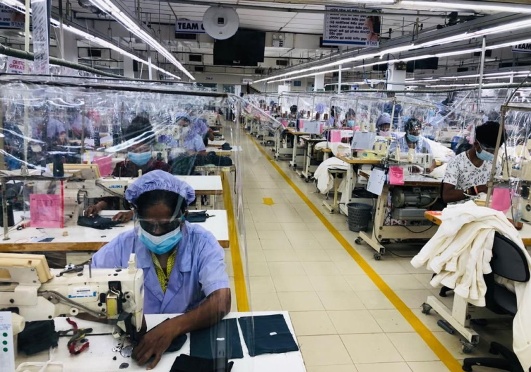By Ravi Dutta Mishra
NEW DELHI – With Sri Lanka buffeted by economic headwinds, Indian apparel exporters are beginning to receive orders from the UK, EU, and even Latin American countries where Indian textiles had little or no presence.
Textiles and garments contributed nearly half of Sri Lanka’s exports but fuel shortages amid its worst financial crisis and ensuing power cuts are disrupting the production of key exports such as apparel and tea.
Much of the tea orders have already started moving to India and now a similar trend is being witnessed in the textiles sector, experts said, especially as India and Sri Lanka produce similar kinds of apparel and garments.
However, Sri Lanka’s apparel and garments exports get duty free access to various countries, unlike Indian exports.
“There could be some benefits in the long run. Their exports are duty-free and that makes a difference. Besides they are trying to keep their textile sector protected despite the crisis,” A. Sakthivel, president of the Federation of Indian Export Organizations (FIEO) told Mint.
Sakthivel added that discussions are ongoing and that exporters have begun receiving queries from several European countries.
Apparel Export promotion council (AEPC) chairman Narendra Goenka concurred that India can emerge as an alternative to Sri Lankan apparel as it can produce the majority of the same products at lower cost.
“The shift in demand from Sri Lanka to India may not be large but exporters have started receiving orders even from markets where we had little presence such as Latin America. Demand is also higher from UAE and Australia, too. What could work in our favour is pricing. Sri Lanka’s cost of production of apparel was much higher compared with India’s and this is why customers are looking at us,” Goenka
According to the US International Trade Administration, apparel export industry is key to Sri Lanka’s economy, as it accounts for about 44% of total exports and 33% of manufacturing jobs.
Sri Lanka’s earnings from apparel exports have dipped the last few years—they stood at $4.4 billion in 2020, about $1.3 billion less than in 2019.
The Indian textile sector, though, is also facing challenges, such as high cotton prices.
The government earlier this month removed basic customs duty of 5% on cotton imports but officials said it may not bring prices down significantly as raw material prices are on the rise globally and the gap between production and international demand for cotton is wide.
Notably, India is taking steps to boost its textile exports. Eyeing a larger share of the international market, which is dominated by man-made fibres (MMFs), the government earlier this month approved 61 applications with an investment potential of over ₹19,000 crore under the production linked incentive (PLI) scheme for textiles.
– livemint.com


